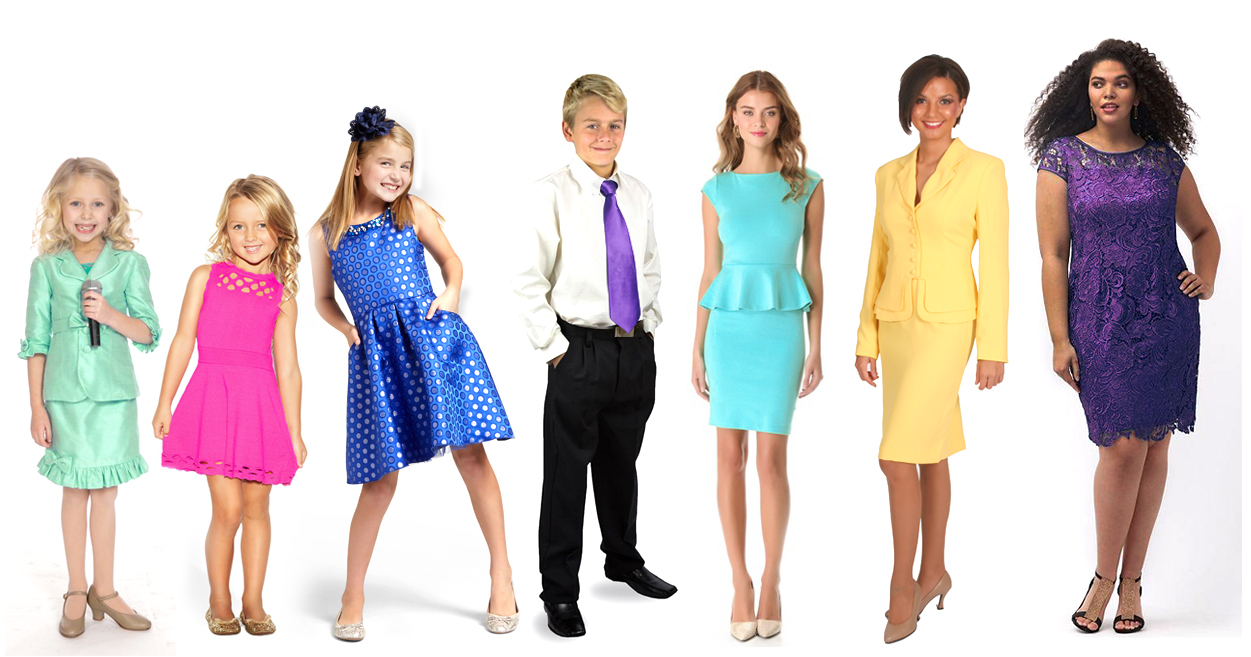 Contestants will introduce themselves at a marked location center stage making sure to include their name, hometown, and something unique about themselves. They may also choose to share why the benefit organization is important to them, but that is not required.
Contestants will introduce themselves at a marked location center stage making sure to include their name, hometown, and something unique about themselves. They may also choose to share why the benefit organization is important to them, but that is not required.
Introductions can be memorized in advance or made up on the spot during competition but may not be longer than 60 seconds either way.
Attire expected for older competitors (Jr. Teen+) is what would be typically worn to a job interview such as a suit or nice dress. Younger contestants may wear something similar or they may choose to wear something less formal like nice slacks and a button-down shirt or a simple dress.
The following are some examples of different personal introductions.
Personal Introduction and On-Stage Question require going on stage only once. A contestant will come out to a marked location center stage, pause briefly (about 5 seconds) and then head to the front of the stage to be handed a microphone for their Personal Introduction. Once contestants have completed their intro, they will draw a question from a bowl, give a short answer, and then exit the stage.
Personal Intros should be kept under 1 minute and answers under 30 seconds.

1) Take a deep breath – Relax and clear your head before you start.
3) Be concise – You have about 30-60 seconds to give your intro. Try to keep it simple.
4) Be confident – There is no right or wrong way to deliver your intro. You are talking about yourself, so have confidence!
5) Pay attention to your posture – Be aware of how you’re standing and where your hands and feet are placed.
6) Be prepared – Try to memorize your Personal Introduction and practice in front of family and friends to get feedback and work out nerves. Practice in front of a mirror to see how your look when you deliver your intro including your facial expresions and posture.
7) Have fun – Be yourself and enjoy your time on stage.